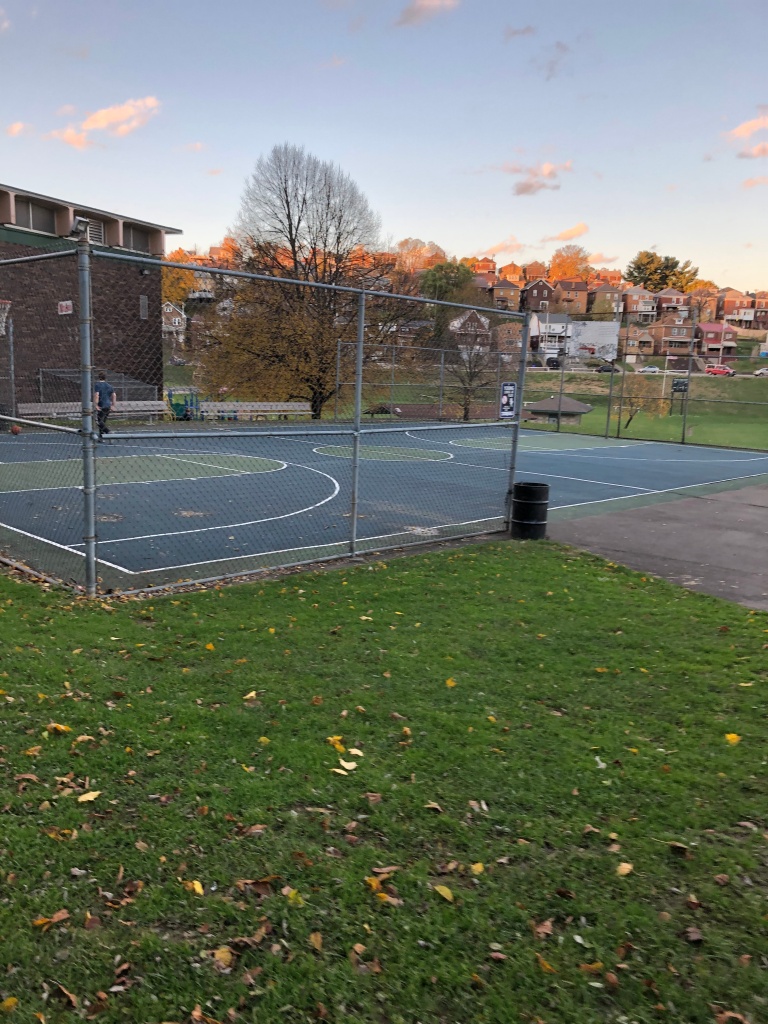My fascination with this city and its 90 unique neighborhoods came as a result of both my growing up here and having a dad who has an intimate knowledge of the city’s landscape through his work as a residential electrician from the 1970’s onward. Pittsburgh’s neighborhoods are often easy to identify because many of them are shaped by the city’s diverse topographical and geographical features, include houses with distinctive architectural styles and promote a place-based sense of community that is on display via neighborhood institutions, parks, local business district corridors and ethnic pride. But, while these features often portray certain neighborhoods in a positive light, Pittsburgh’s topography and its high degree of economic and racial segregation by neighborhood can also serve to reinforce the existing divides between those neighborhoods entrenched by lasting and concentrated poverty and disadvantage and those neighborhoods that are well-known, well-off, accessible and are recipients of ongoing public and private investment.

This divide became apparent to me as I got older. While I originally lived in a small rental apartment with my older sister and parents on the border of Knoxville on Brownsville Road in Carrick, we moved back and forth between rentals in Brookline and Carrick until my parents were able to buy their first and only home on Rossmore Avenue in Brookline when I was roughly 8 years old. While my dad once lived in a large and beautiful home on Tennyson Avenue in North Oakland and had grown up upper middle class, a number of intense family complications and a desire to pursue the trades led him to a working class existence about a decade before he met my mother. My mom had grown up in a low-income home with its own kind of beauty on Rochelle street in Knoxville. But as the steel mills shuttered their doors to financial supporters like her uncle Bill, Knoxville began to steadily decline and spike in poverty from roughly the 1970s onward.

As the persistence of neighborhood poverty and its effects on childhood development became clear to me, so too did the educational, occupational and income outcomes of some of my own extended family who remained in poor hilltop neighborhoods like Knoxville as compared to the outcomes of my siblings and me on those same measures. While we did grow up in a complicated, low-income home in Brookline, unlike Knoxville, Brookline was absent the level of gun violence steadily increasing in Knoxville, stable, overwhelmingly comprised of working class and middle class families (with access to formal and informal networks and opportunities) and was a neighborhood that offered a myriad of economically accessible enrichment activities for my siblings and I to participate in. And we are also white; a fact that doesn’t deny the obstacles my siblings and I faced growing up, but one that undoubtedly helped us get to where we are today. As such, and as backed by place-based research across the nation, my own experience in Brookline contributed to the narrative that the neighborhoods in which we and our parents grow up tend to predict a number of socio-economic, health-based and educational outcomes. Neighborhoods are by no means the whole story regarding the puzzle of social mobility, but they are a big part of it – given that they shape so many of our educational, social and job networks and opportunities.

This page will explore a few things. First, I want this page to be an intimate and accessible snap shot of all 90 Pittsburgh neighborhoods and my ultimate goal is to walk every single street in the City of Pittsburgh by neighborhood. Each neighborhood explored will receive a Neighborhood Profile which will include a brief historical write-up, past and recent neighborhood level statistics, promote unique institutions and businesses in the area and will include photos from my walks. Resident interviews will supplement Neighborhood Profiles and will be posted separately. Second, from time to time, I will tie these neighborhood level explorations and statistics into something more cohesive and meaningful via analysis and extrapolation. These posts will be known as Data Briefs. Truly, this page will be an exploration of not only the neighborhoods here in Pittsburgh and their given unique beauty, but will also serve to tell the tale of lasting residential segregation by race and income and the past and present factors that contribute to this ongoing segregation.
Lastly, I want this page to challenge what we think we know about certain neighborhoods in Pittsburgh and the residents who reside there. And my hope is that you all will be inspired to visit and support these neighborhoods, their residents and their institutions as you become more familiar with them. Pittsburgh is a city that I am proud to call home. But like all cities, its most vulnerable residents face steep challenges. This project aims to explore both the positive and negative aspects of this great city.
You can follow us on Facebook by searching for the Pittsburgh Neighborhood Project and on Twitter @ThePittsburghN1
*Regarding my credentials*, I’m an urban poverty, urban sociology, neighborhood effects, developmental and behavioral psychology and housing policy nerd. Meaning, I read research for fun because I have no life. I currently work for the local government and conduct analyses and research related to housing and homelessness programs and affordable housing policy. My past work experience includes poverty and housing research for other local government entities and institutions, capacity building as an AmeriCorps VISTA for a local afterschool program in Homewood and the Upper Hill and I was a case worker for several years. Most importantly, I know the experience of poverty first hand and this has greatly informed and shaped the direction of my life and my interests. My siblings and I experienced a number of other “complications” growing up, but this isn’t the appropriate space to discuss such things. Just know that these complicated experiences have also shaped my view of neighborhoods, the family unit, peer effects and schools and how they all come together to shape a great deal of our lives and adult outcomes.
But*, there’s also a lot I don’t know because I haven’t experienced it. And that’s why resident interviews and walking each neighborhood will be so vital in informing this project – as opposed to just relying on data analysis alone. I firmly believe that we need to “get in it” to try to understand something to the extent we possibly can. Lastly, I was beyond lucky enough to receive my Master of Science in Public Policy and Management from Carnegie Mellon and my undergrad degree is in Research Psychology with a minor in Philosophy from Wheeling Jesuit University. I’ve had a ton of support to get where I am today and my own privileges and advantages have helped me get here. All these factors will inform this project.
*The opinions expressed on this page are mine alone and may not represent those of my former or current employers.*

Leave a comment